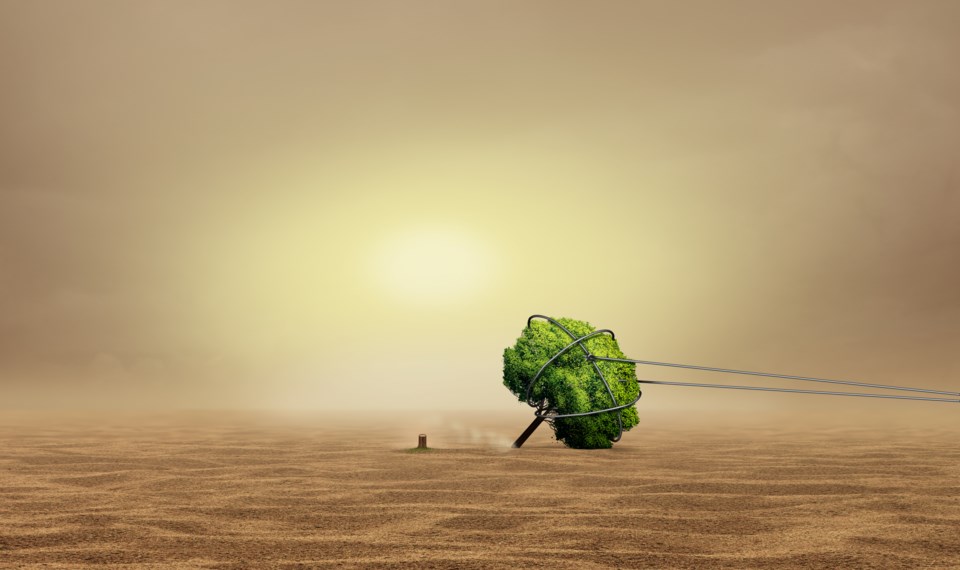Last April, as the COVID-19 pandemic was accelerating into the juggernaut that has pinned us down for over a year, an article appeared in Time magazine bluntly titled: “Want to stop the next pandemic? Start protecting Wildlife Habitats.”
It was a direct reference to a well-established chain: consumer demand à deforestation à loss of wildlife habitat à greater human contact with animal disease reservoirs à zoonotic transfer à epidemic. We’ve seen many such scenarios in recent decades, from regional outbreaks of Ebola, SARS and MERS, to the global march of HIV, Swine Flu and Zika, so our current predicament comes as no surprise.
Seismic as the loss of lives and economic interruption have been, however, the pandemic is but one symptom of overarching human ecological dysfunction. Coupled with the effects of climate change on display daily—floods, wildfires, glacial retreat, ocean acidification, landscape collapse—it should be clear that human enterprise is in a state of meltdown. At the rate we’re consuming nature’s goods and services, ecosystems simply cannot keep up. Globally, the average level of consumption already far exceeds Earth’s long-term carrying capacity, and estimates show that we’d need five Planet Earths to support the world’s current population—with no additional growth—at the average living standard enjoyed in Canada. Put like this, our path is clearly unsustainable.
Fortunately, this is being acknowledged in post-pandemic recovery conversations. Given the dependence of so many sectors of society on nature and ecosystems, recovery plans that focus on a transition to biodiversity-friendly economies are bound to create living conditions with less risk, more jobs and better livelihoods. It’s the thinking behind sloganeering like Build Back Better, The Great Reset, and Green New Deal currently echoing to various degrees of acceptance (most people) and rejection (conservatives) through the corridors of power. Unsurprisingly, according to a January 2020 World Wildlife Fund (WWF) report, we’re already paying big-time for biodiversity loss, and it will total a US$10-trillion hit to the world economy by 2050 under a “business-as-usual” scenario. It follows that spending far less to reverse this trend would be a sound investment; indeed, the study calculates a US$490-billion annual net gain in GDP under a “global conservation” scenario.
In response to Global Convention on Biodiversity targets set in 2010, federal, provincial and territorial governments collaborated on 2020 Biodiversity Goals and Targets for Canada. The publication reflects both Canadian priorities and ways to aid the global effort (Canada, for example, holds a quarter of the world’s wetlands, which are important not just for their resident fauna, but also species that migrate through them). Canada’s 19 targets support four goals: A) better land-use planning and management; B) more environmentally sustainable management across the economy; C) improvements to available information concerning “people benefits” of nature; and, D) increased general awareness of biodiversity and participation in conservation.
The ideas are trickling down (the RMOW is currently pursuing some) and progress is being made on some fronts, though not so much on others. Taking B.C. as an example of biodiversity good news/bad news, finally setting aside critical habitat (albeit decades late) for the highly endangered Spotted Owl, instituting greater protections for some wild salmon stocks, creating a national park in the south Similkameen, and supporting Southern Resident Killer Whales hardly makes up for the continued logging of old growth, perpetuation of disease-dealing salmon farms, threatened caribou herds, and lack of endangered species legislation. These cavalier odes to biodiversity protection are barriers to the kind of COVID recovery many of us would like to see.
This past spring, an online Global Biodiversity Festival convened some 65 live virtual events with scientists, explorers, conservationists and policymakers from 20 countries. Most banged the drum of more protections, more money, more understanding of biodiversity’s role in our lives, but Marco Lambertini, director general of WWF, best summed the actions needed: Stabilizing climate and biodiversity loss in order to live in more harmony with nature should be humanity’s No. 1 priority. This, he averred, requires a sea-change in thinking: producing more responsibly, consuming more wisely, building a green economy with subsidies and investment in more sustainable production of food, energy and goods. With $44 trillion of economic value—equivalent to half the world’s GDP—dependent on nature, according to a report by the World Economic Forum, Lambertini foresees a cultural revolution that puts “the idea that nature is not just beautiful, but indispensable” at the centre of planning. “We need a New Deal for Nature and People—a ‘Paris moment’ for nature if you will,” he said.
Whatever paths are trodden, scientists agree there’s only one way forward: a more carbon neutral and nature-positive world to stop the loss and begin recovering. It will require participation of not just governments, but each of Earth’s 7 billion people. And herein lies an opportunity for Canada: the pandemic-induced will to improve on protecting biodiversity in tandem with other similarly motivated countries. If the effort goes global, it’s bound to reduce the probability of similarly severe outbreaks.
Given current political structures and economy über alles orthodoxy, however, as we’ve seen with both the current climate emergency and pandemic, even direct threats to human existence offer only fleeting and fractious calls to collective action. While I’m not holding my breath that things will improve—I’m desperately hoping to be proven wrong.
Leslie Anthony is a science/environment writer and author who holds a doctorate in connecting the dots.





